Different Types of Tapes and Where to Use Them?
When it comes to adhesives, there’s no one-size-fits-all solution. The right type of tape can make all the difference in various projects, from simple household repairs to complex industrial applications. In this article, let’s explore the most commonly used tapes, including masking tape, double-sided tape, duct tape, and many others. Whether you’re a DIY enthusiast or a professional, understanding the different types of tapes can help you choose the best product for your specific needs.
1. Masking Tape/ Painter’s Tape
Painter’s tape or masking tape is a pressure-sensitive tape made of a pressure-sensitive adhesive and thin paper. It is so thin that you can tear it with your bare hands. There are several widths available for it. The masking tape is primarily used to conceal areas that mustn’t be painted when painting the house. Without it, the paint bleeds beneath the tape’s edges, creating a hazy or uneven line.
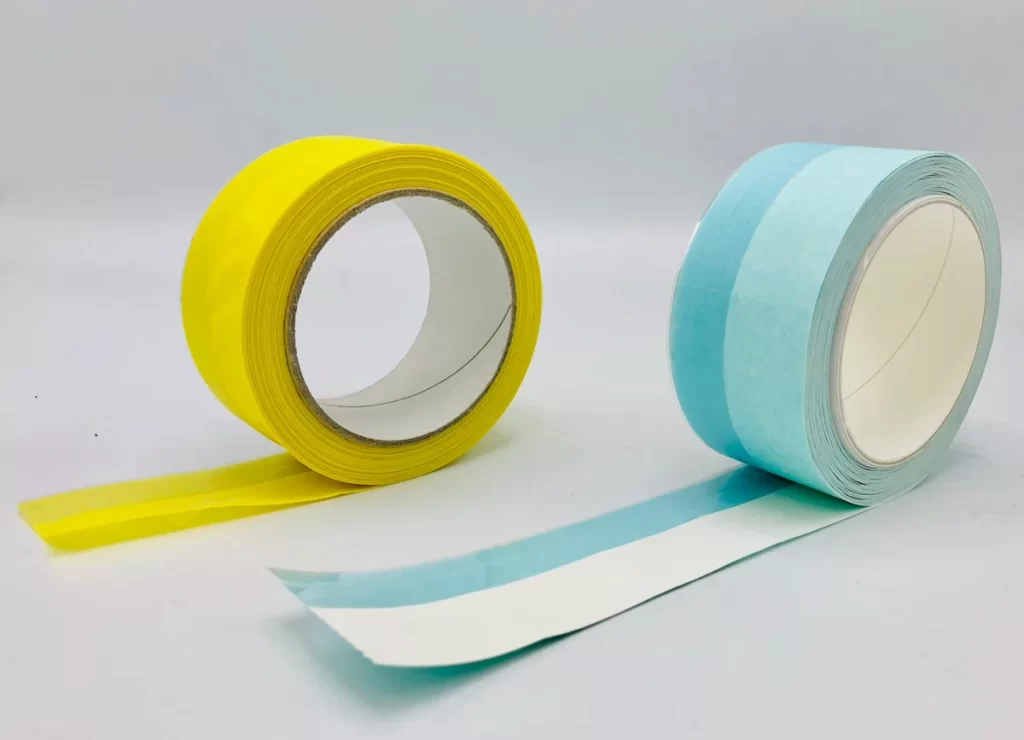
Certain low-cost painter’s tapes are suitable for everyday use in offices and homes. Others are made for house painters who work professionally. Heavy-duty masking tape is also used in automobiles or aeroplanes, for these demanding applications. Long strips of masking tape are also applied to larger glass panes in cases where breaking glass could injure people nearby.
2. Double Sided Tape
Any pressure-sensitive tape, coated with adhesive on both sides is referred to as double-sided tape. It is intended to adhere two surfaces together, so that the tape itself is not visible, making any project neater. Double-sided tape comes in two varieties: dimensional and thin. The thicker, dimensional tape is used for signage and retail rendering a 3-D appearance.

To create a double-sided tape, a thin layer of adhesive is applied to each side of a carrier material. They are produced in log form, such as large rolls that are 1 to 3 meters wide. The rolls are then cut into the appropriate widths.
3. Duct Tape
Duct tape is a pressure-sensitive tape with a cloth or scrim backing, often covered in polyethene. Although duct tape is typically silvery grey, it can also be printed with a variety of colours and patterns, such as useful camouflage patterns, college logos, or randomised designs. Whenever, you need a strong, flexible, and extremely sticky tape is needed, duct tape is your go-to. Some are resistant to weathering and have a long-lasting adhesive, while others are heat-resistant.

4. Gaffer Tape
Gaffer tape is a heavy cotton cloth pressure-sensitive tape with strong adhesive and tensile strength. A specialised version of duct tape, it is also referred to as gaffer’s tape, gaff tape, gaffa tape, or spike tape. It is used in industrial staging, radio and television production, photography, film, and theatre. Its backing is made of fabric rather than vinyl or other plastics, and the adhesive is more heat-resistant and easier to remove without causing damage to the surface. Gaffer tape is often used for concealing equipment or safety purposes when fastening cables to a stage floor, podium, or other surface.

5. Electrical Tape
Electrical tape or insulating tape is a pressure-sensitive tape used to insulate electrical wires and other electrically conducting materials. It is generally made of PVC as it stretches well and provides durable and efficient insulation. Fiberglass fabric is used to make electrical tape for class H insulation. The main types used in electrical applications are varnished cambric, vinyl, rubber, and mastic. Based on the wire’s voltage level and phase, electricians may use different coloured electrical tapes.

6. Packaging Tape
The pressure-sensitive tape called packaging tape, box-sealing tape, parcel tape, packing tape, or shipping tape is used to seal corrugated fiberboard boxes. You might have seen these box-sealing tapes with packers and movers. The pressure-sensitive adhesive is applied to a backing material, typically a polyester or polypropylene film. The thicker the packaging tape, the stronger it will be. It can be any colour, with or without prints and logos, but you’d generally find clear packing tape in the market. It also comes in tan.
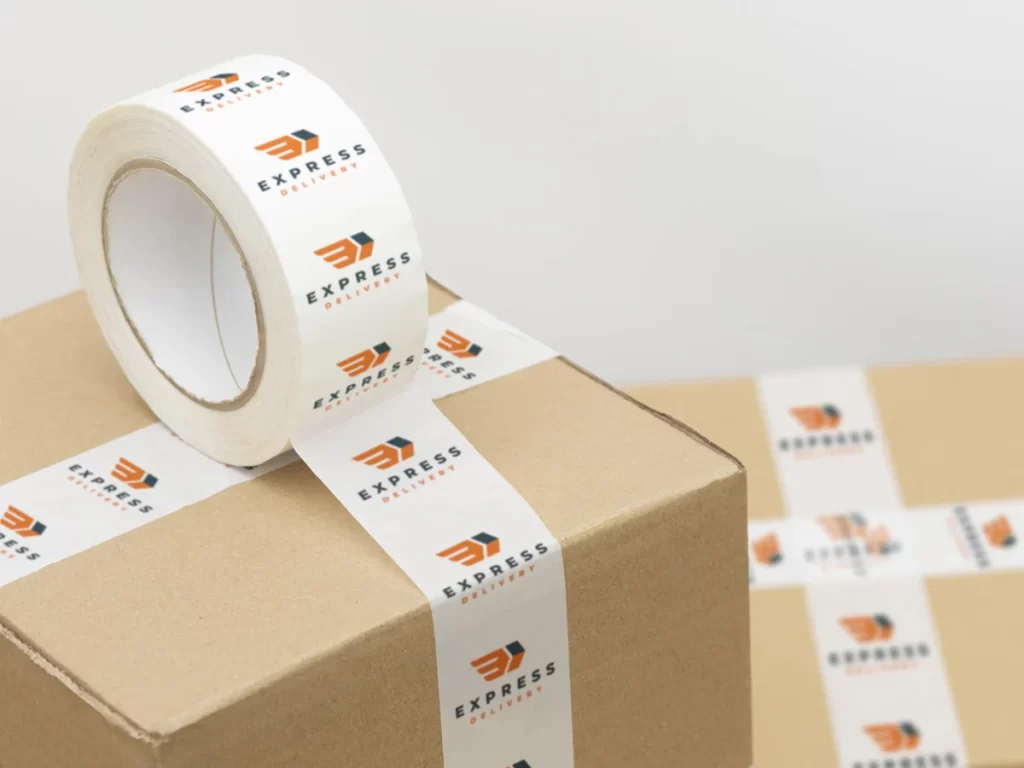
7. Anti Slip Tape
Anti slip tape is applied to work surfaces, such as floors, stairs, and ladders, to keep employees from slipping and falling. It has a grippable surface that raises the friction between the worker’s footwear sole and the work surface, reducing the possibility of slipping. Anti-slip tape is mostly applied to prevent serious injuries. It is often used in places most exposed to water, oil, or other substances. There are numerous colours and patterns of anti-slip tape, depending on the lights in the room.
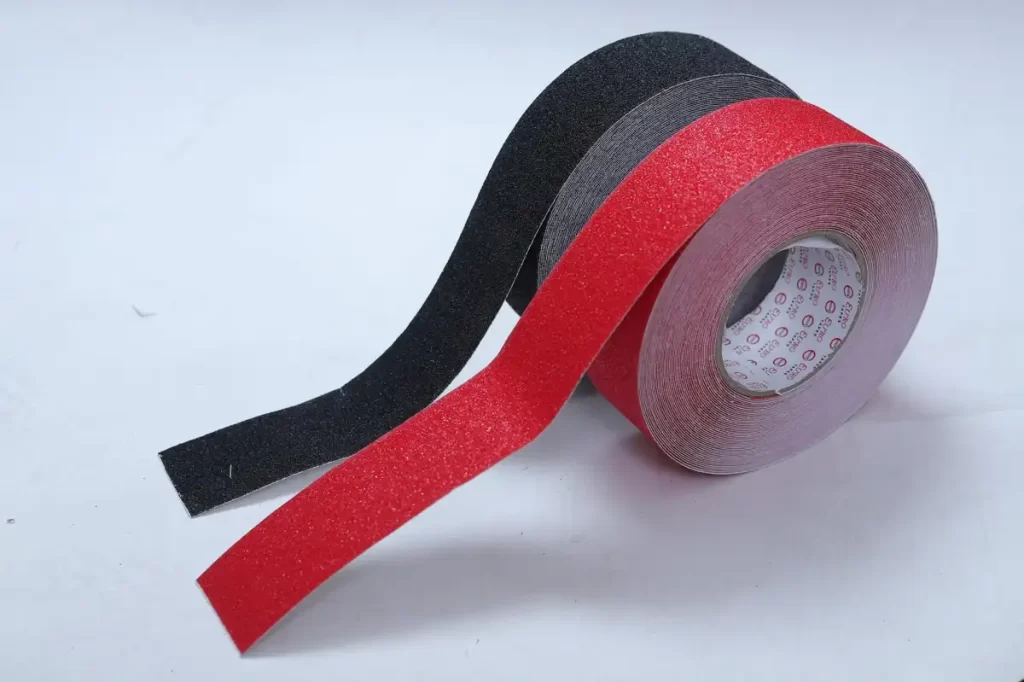
8. Filament Tape
Filament tape or strapping tape, is a pressure-sensitive tape made of fiberglass filaments with a high tensile strength. It is employed for many packaging tasks, including pallet unitizing, corrugated fiberboard box closure, package reinforcement, and item bundling. It was first created in 1956 by Cyrus W. Bemmels, a scientist for Johnson and Johnson. Filament tape comes in a range of grades, signifying their tensile strength.
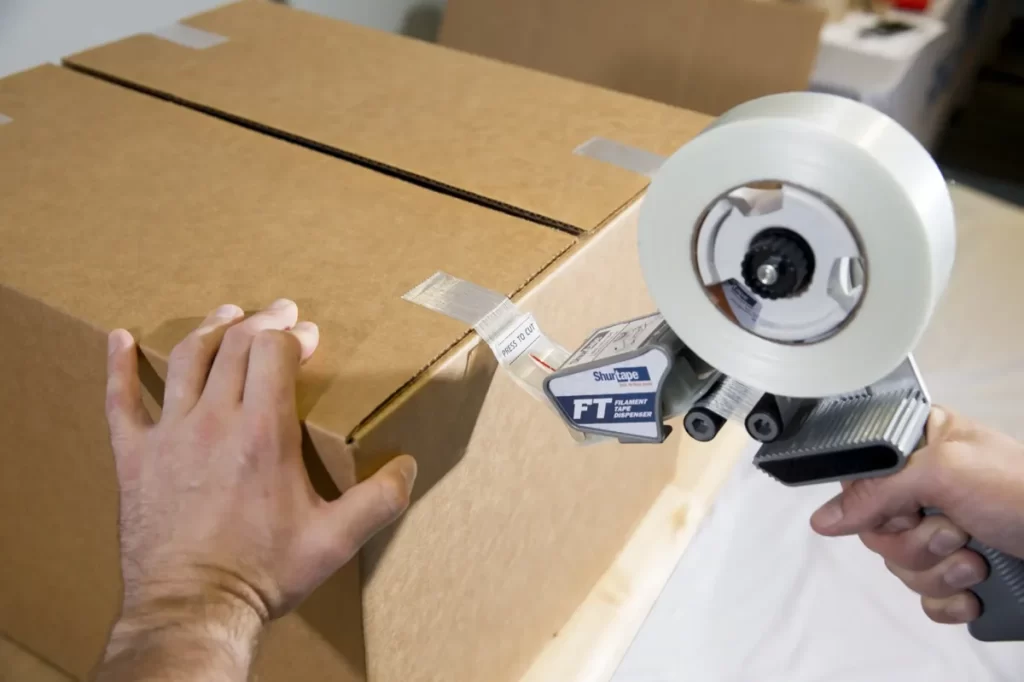
9. Safety Tape
Barricade tape or safety tape is the brightly coloured tape used to alert onlookers of a potentially hazardous area or situation. It frequently features a two-tone pattern of alternating yellow-black or red-white stripes or the words “Caution” or “Danger” in large lettering. A common use for the tape is as a visual warning sign and demarcation. Safety tape can be used to warn people not to enter dangerous areas like commercial or industrial building sites, road construction sites, accident scenes, or crime scenes.
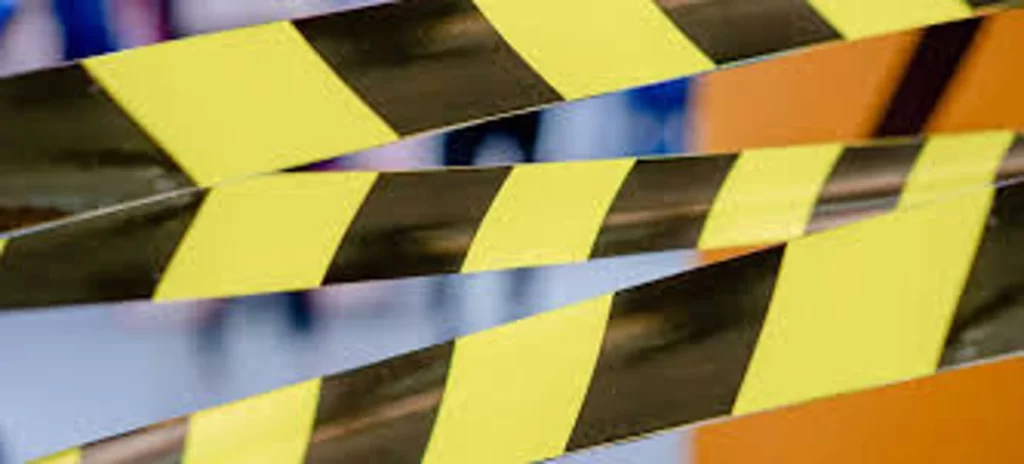
10. Foil Tapes
Foil tape is an adhesive tape with a foil backing. Metal, joints, and duct seams are often covered with foil tape instead of duct tape. It is used in metal finishing, automotive, and aerospace industries.

Image Courtesy – Courtesy – IP Products
Contributor






